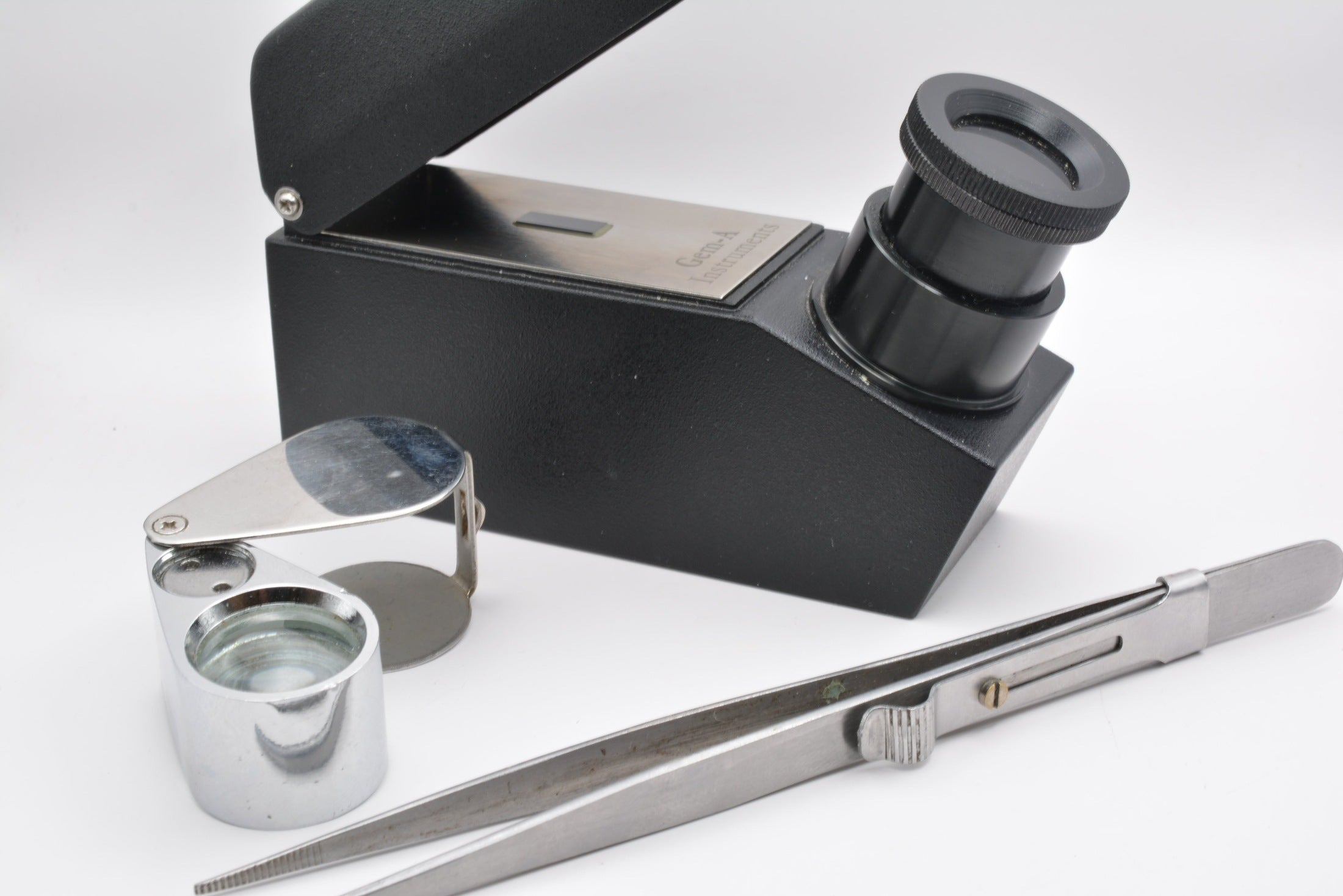
Gemological tools
Here is the list of classic gemological tools that are used to check the stones for sale on this site:
- Magnifying glass x10: Stone observation

- Binocular/microscope: Closer observation at higher magnification.
- Polariscope: Allows you to observe how light behaves in the stone and thus determine the optical character of the stone (isotropic or anisotropic). What looks like a small magnifying glass is a conoscope for observing interference patterns.

- Refractometer: A measurement of a gem's refractive index. Each stone has one or more refractive indices that fall within a specific range.

- Spectroscope: Analysis of the absorption spectrum of the gem when the stone presents one.

- Dichroscope: Observation of pleochroism (difference in color depending on the observation axis).

- Precision balance: measures weight in carats.
- Hydrostatic balance: Measurement of density.
The photo only shows what is added to a scale. Here, it's a kit that can be used on many scales. Very practical when traveling where it's not possible to bring a large scale with a hydrostatic measuring system. But the operation is the same. The baskets are normally in the water-filled jar, but for better visibility, they have been removed.

- UV light 254nm and 365nm: Observation of the stone's behavior under UV (fluorescence or not).
- Chelsea Filter: to assess the presence of chromium which is a chromogenic element in certain stones.

None of these tools alone can accurately identify a gem. It is the combination of the different results obtained with these tools. which will allow it.
Analysis laboratories that issue recognized certificates of authenticity also use spectrometers that measure absorbance/transmission in the visible, near infrared, UV light range, etc.
The cost of these certificates ranges from a few dozen euros for the lowest prices (not necessarily recognized in the industry) to a few hundred euros. This depends on the stone, the level of analysis, and the laboratory's recognition.
Sometimes an analysis by a recognized laboratory can cost more than the stone itself. This is the case, for example, with quartz, for which there are many synthetic versions on the market. In this case, requesting authenticity will not make financial sense.
Collections
View all-

Aquamarine
Aquamarine is the blue variety of beryl (emerald family). It's a classic...
-

Tsavorite Garnet
Tsavorite garnet belongs to the grossular garnet family. They have a beautiful...




